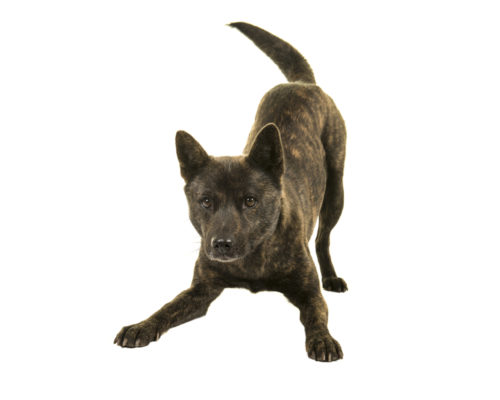
No part of a dog exists alone, and shoulders are intimately related to most other portions of the forequarters. Unfortunately, dogs don’t always inherit balance in their “fore” and “aft,” and sometimes not even in the parts of their front. Sometimes they’ll get a wonderful should blade but incorrect upper arm, and sometimes it’s the other way around. When the angle and length in either is “off,” it will impact the dog’s head and neck carriage, and that, in turn, impacts the dog’s lift and reach, and not in a good way.
When a longer and better angled upper arm is on a dog that may already be set forward or is too straight in that area, it can put the legs too far under the dog’s body, and that puts too much weight on the forehand. The straighter shoulder blade sets the dog up for weaker attachment of the neck ligament, and that requires more energy for front leg movement. This type of forequarter angulation is often called a “wolf shoulder.”
Remember, a dog’s front holds the body weight, and the back propels the dog forward. If a dog has a short upper arm, but his shoulder blade is well laid back and of correct length, he would have what is typically called a terrier front. If the dog’s shoulder blade and upper arm are shorter and straighter, but his rear is strong, the dog is out of balance and will lift his front feet in a padding or paddling when moving to compensate for a strong propelling rear using a semi-hackney gait.
Shoulders are tough. Not only can they be least understood, but most breeders find that they are the easiest aspect of a dog to lose, and the toughest to correct in the next generation. It’s also important to know your breed standard because different breed standards can have different wording for what is correct in that breed.
Our image of a Kai Ken (credit:DepositPhoto) is not representative of wolf shoulders
